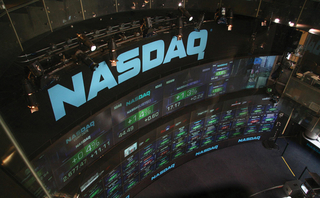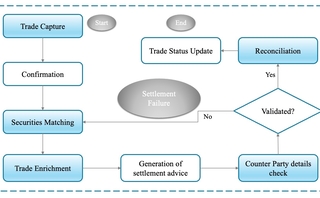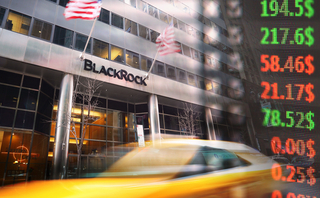Locking down the lifecycle: Trading Technologies turns to analytics and TCA in latest acquisition
The tech provider gains TCA, analytics, and algo optimization tools as established vendors vie to build more comprehensive platforms.

Summer may be drawing to a close, but acquisition season is still in full swing. Trading Technologies (TT) has become the latest in a series of exchanges and vendors to announce big-ticket buys this year. Although the value of the deal is almost certainly eclipsed by the multibillion-dollar purchases of SimCorp and Adenza, it does serve as a useful weathervane in an industry where established vendors and venues are trying to offer more exhaustive services across assets and throughout the trade lifecycle.
The acquisition of Abel Noser Solutions (ANS), formerly a subsidiary of US agency broker Abel Noser, marks TT’s expansion into transaction cost analysis (TCA), a tool that helps institutions measure broker performance, model trades, and comply with regulatory requirements. ANS also provides regulatory services and analytics to investment managers, brokers, consultants, and asset owners.
While any of these individual functionalities could conceivably be built organically, Keith Todd, CEO of TT, says that the buy-versus-build considerations extended beyond ANS’ concrete business offerings. “In this instance, it was very easy [to decide on the buy route]. Ultimately, it’s about time to market, skills and experience, subject matter expertise, and about the buy-side customer base,” he says.
In particular, he highlights the 45 staff joining TT from Abel Noser, bringing with them the lessons accrued over Abel Noser’s 48 years in the market. “Overnight, we go from being data-and-analytics-light to having a depth of knowledge very swiftly,” Todd says.
TT, which has a core history in derivatives, signaled its move into a multi-asset offering with the acquisition of Axe Trading in March this year, bringing it access to the corporate and government bond markets and connectivity to around 50 fixed-income trading venues.
Then in June, the company announced plans for a new foreign exchange (FX) business line, TT FX, with the first phase due to go live in late 2023.
ANS, which is most experienced in equities and fixed income, completes the set. “Importantly, it’s very complementary to TT. TT is very strong in the futures and options space, and we’re driving an FX initiative that we announced in June,” Todd says.
“We’re going to bring data, knowledge, and skills to Abel Noser in order to expand. As a standalone business, Abel Noser will have access to all of this to expand their offering and keep the momentum going, then it will end up integrated onto our platform.”
Multitasking
In a market where tech providers are trying to offer increasingly comprehensive services, the competitive advantage of capturing more asset classes and an extra stage of the trade lifecycle is clear, according to Ben Parker, CEO of regtech provider Eflow.
“There’s a natural synergy there, because anybody who is purchasing front-end technology will have an interest in the cost of execution,” Parker says.
Historically, TCA has been considered a post-trade activity, at odds with front-office trading systems. It was also traditionally constrained to equities markets, where data was most abundant and accurate. Now, the electronification of trading and advances in data standards has opened up new hunting grounds, including pre-trade TCA (using execution analytics to influence how the trade is done).
“Trading isn’t just about the execution of a trade. It’s about understanding the market, understanding what you want to trade, getting the news flow, the dynamics. Data and analytics influence any trade,” says TT’s Keith Todd.
In fixed-income markets in particular, automation is making trade data such as timestamps more accurate, and electronification is helping to provide a more holistic view of available liquidity to benchmark against. This, combined with easier access to dealer inventory and an increase in information flow on dealer axes, is rapidly turning fixed-income TCA into a reality—according to a recent study by Coalition Greenwich, 65% of buy-side firms currently use or plan to use TCA for fixed income.
However, TCA is still limited by the availability of data in more analog asset classes. “It’s harder to benchmark against liquidity in the market if the asset isn’t electronically traded. It’s like buying a house—there’s no identical house you can compare it with,” says Parker, adding that some of his clients are trying to conduct TCA on products that are only quoted once a day.
Even in fixed income, TCA is rarely used beyond credit and treasuries. In a webinar hosted by Coalition Greenwich, Tom Melvin, Invesco’s director of North American credit trading, explained that liquidity is still a thorn in the side of effective TCA.
“If you asked a sell-side equity trader how many names he could get a market on for, say, 5,000 shares a nickel wide, on the Russell 2000 Index, it would be 100%. But if you looked at the 1,900 names in the ICE Bank of America US High-Yield Index, maybe you could get a market on a million-up shares on 300 names. How do you evaluate a trader on the 1,600 names that he potentially executed but couldn’t get a market on? That’s a question for credit traders, especially in times of volatility, which often leads to illiquidity,” Melvin said.
And TCA for fully OTC asset classes remains a distant prospect. “Until you have something like a consolidated tape it’s very hard to do. So if this is a move to standardize electronic trading and OTC across the board, then that will be a fair way off,” says Eflow’s Parker.
In spite of the obstacles, however, Parker believes that more large financial services companies will follow TT’s lead in acquiring or building TCA offerings across asset classes. He points out that established players with an existing depth of trading data to benchmark against will be able to navigate the dearth of data more easily.
“Who the next big one will be, I don’t know. But it is natural that more trading technology providers will do this. And I think more exchanges and venues will do it, too,” he says.
Next steps
In addition to the TCA functionality, which TT is prioritizing rolling out to clients along with the regulatory services, the company is also getting analytics tools, which will be integrated into the TT platform later on.
Abel Noser has a library of standard reports (i.e. not for individual clients), which TT plans to open up to customers. It then hopes to bring Abel Noser’s analytics capabilities to individual clients so that they can analyze their use of the tools available to them on TT’s platform using regular reports (likely monthly).
“It is our intention to use Abel Noser’s data and analytics to allow our customers to assess how [our execution tools, like spreaders, aggregators, and algos] performed relative to the market,” Todd says.
Todd gives the example of a trader using TT who wishes to look at detailed reports on their performance from the past month as they are executing a trade. He says that TT plans to make this possible through a single log-on, but on a separate UI screen to the trading front-end.
“It will be a separate UI, but it will be available to the wider TT customer base very quickly. The metaphor I use is the cable TV business, where you can start off with a few movie channels, but then when you want a new sports channel, you can just switch it on. These will be two different user interfaces, but it will be easy to switch over to a different screen. This is the final area and will probably take a while to come to full fruition,” Todd says.
He adds that, while TT will maintain the Abel Noser brand, “we don’t acquire these companies to run them separately. … All roads lead to a pretty tight integration of the features and functions.”
Along with ANS, TT is also acquiring algorithm optimization engine Start in a separate deal set to close in the first quarter of 2024. Start leverages TCA in equities to tweak the way that algorithms operate.
“It is fair to say very transparently that [the Start product] wasn’t the reason we acquired Abel Noser (it was data and analytics), but it is an interesting byproduct,” Todd says.
TT already has a suite of algorithmic tools. In 2022, it acquired algo provider RCM-X. It now plans to integrate Start with RCM-X to offer more algorithmic trading opportunities to the buy side.
Earlier this year, fixed income trading platform MarketAxess acquired multi-asset algo provider Pragma, betting that higher velocity markets will give algos a boost.
Todd agrees. “You’re going to see more [growth in algo trading]. … There are traditionally a handful of standard models. But the beauty of algorithmic trading is it’s almost infinite in the number of different ways you might be able to automate your trading. It’s a really important part of the overall acquisition and impact on TT’s future,” he says.
Selling to the buy side
In one fell swoop, TT has picked up an array of new tech: TCA capabilities, data and analytics, and algo optimization.
For Todd, this new arsenal is key to the company’s strategy. “I think that when the history books are written, it will be a pivotal moment for TT,” he says.
Crucially, the acquisitions are also bringing TT closer to the buy side. Although the TT platform has more than 6000 buy-side users, many of those connections are forged through sell-side brokers.
Abel Noser’s subsidiaries also come with an existing buy-side community, which Todd hopes TT can build on.
“In any marketplace, but certainly in capital markets, it is a lot easier to sell to existing customers who are happy with the service being provided than to win a new customer. You have a relationship, you probably have a contractual framework which can be expanded more easily,” Todd says.
Like the push to expand into new asset classes and offer solutions throughout the lifecycle of the trade, the attempt to secure more users—on both the buy side and sell side—speaks to a current trend. With many of the core products at established technology providers now being regarded as table stakes, the race is on to build a more comprehensive offering—with more integration, liquidity, and functionalities.
As long as big players see the potential to woo more of the market by adding new capabilities, that means that the consolidation will never be far away.
Further reading
Only users who have a paid subscription or are part of a corporate subscription are able to print or copy content.
To access these options, along with all other subscription benefits, please contact info@waterstechnology.com or view our subscription options here: http://subscriptions.waterstechnology.com/subscribe
You are currently unable to print this content. Please contact info@waterstechnology.com to find out more.
You are currently unable to copy this content. Please contact info@waterstechnology.com to find out more.
Copyright Infopro Digital Limited. All rights reserved.
You may share this content using our article tools. Printing this content is for the sole use of the Authorised User (named subscriber), as outlined in our terms and conditions - https://www.infopro-insight.com/terms-conditions/insight-subscriptions/
If you would like to purchase additional rights please email info@waterstechnology.com
Copyright Infopro Digital Limited. All rights reserved.
You may share this content using our article tools. Copying this content is for the sole use of the Authorised User (named subscriber), as outlined in our terms and conditions - https://www.infopro-insight.com/terms-conditions/insight-subscriptions/
If you would like to purchase additional rights please email info@waterstechnology.com
More on Trading Tech
For MarketAxess, portfolio trading buoys flat revenue in Q3
The vendor is betting on new platforms like X-Pro and Adaptive Auto-X, which helped forge a record quarter for platform usage.
Quants look to language models to predict market impact
Oxford-Man Institute says LLM-type engine that ‘reads’ order-book messages could help improve execution
JP Morgan pulls plug on deep learning model for FX algos
The bank has turned to less complex models that are easier to explain to clients.
Nasdaq says SaaS business now makes up 37% of revenues
The exchange operator’s Q3 earnings bring the Adenza and Verafin acquisitions center stage.
Harnessing generative AI to address security settlement challenges
A new paper from IBM researchers explores settlement challenges and looks at how generative AI can, among other things, identify the underlying cause of an issue and rectify the errors.
The causal AI wave could be the next to hit
As LLMs and generative AI grab headlines, another AI subset is gaining ground—and it might solve what generative AI can’t.
Waters Wrap: Operational efficiency and managed services—a stronger connection
As cloud, AI, open-source, APIs and other technologies evolve, Anthony says the choice to buy or build is rapidly evolving for chief operating officers, too.
BlackRock forecasts return to fixed income amid efforts to electronify market
The world's largest asset manager expects bond markets to make headway once rates settle.








